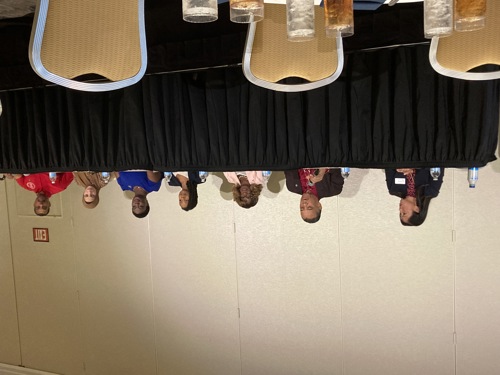
Six panelists, moderated by Charissa Lee, OD, MBA, FAAO, of Johnson & Johnson (J&J) Vision, assembled on day one of the National Optometric Association (NOA) convention, occurring in Philadelphia, July 11 to July 14, to discuss action steps for creating a more diverse profession. The panelists were part of the J&J “Pathways to Diversity in Eyecare Panel Discussion” event and included Drs. Larry Jones (NOA Immediate Past President) Sherrol Reynolds (NOA Past Present), Joy Harewood (Clinical Professor SUNY) Ade Owolewa (a recent NECO graduate), Aayh Abelgawad (recent Salus graduate), and Frank Barnes (NOA president)
All the panelists cited these obstacles to diversity: a lack of awareness of the profession among diverse communities, and little-to-no promotion from colleges and universities about a career in optometry. Their suggestions for surmounting these obstacles:
• Educating diverse patients. “Many of us provide eye care to diverse populations,” explained Drs. Abelgawad and Harewood. “When we have a child or young adult in our chairs, we should talk to them about the opportunities a career in optometry provides.”
Dr. Reynolds noted that doing so could increase the likelihood of the establishment of pre-optometry clubs in HBCUs [historically black colleges and universities], which would funnel a more diverse population into pursuing optometry.
Recent graduate Dr. Owolewa added, “Gen Z speaks the language of social media. If you have a practice, use Instagram to illustrate how awesome practicing optometry can be.
• Reaching out to colleges and universities. Organizations, such as the NOA and Black Eye Care Perspective need to continue to reach out to HBCUs, among other colleges and universities, to educate the powers that be that optometry should be included in conversations about careers in health care, asserted Dr. Jones.
Dr. Barnes added the importance of educating diverse students who want to apply to optometry school about the importance of differentiating themselves by discussing their unique experiences and drive to succeed. The “Diversify Optometry Program,” created by the National Optometric Student Association (NOSA) and the American Optometric Student Association, in part, links aspiring ODs to enrollment assistance, mentorship, and professional development (https://www.mynosa.com/dop).
In closing, Dr. Owelewa said she hoped everyone in attendance was feeling both inspired and empowered:
“Really think about what you can do to make optometry more diverse,” she urged. “Get involved!” OM



